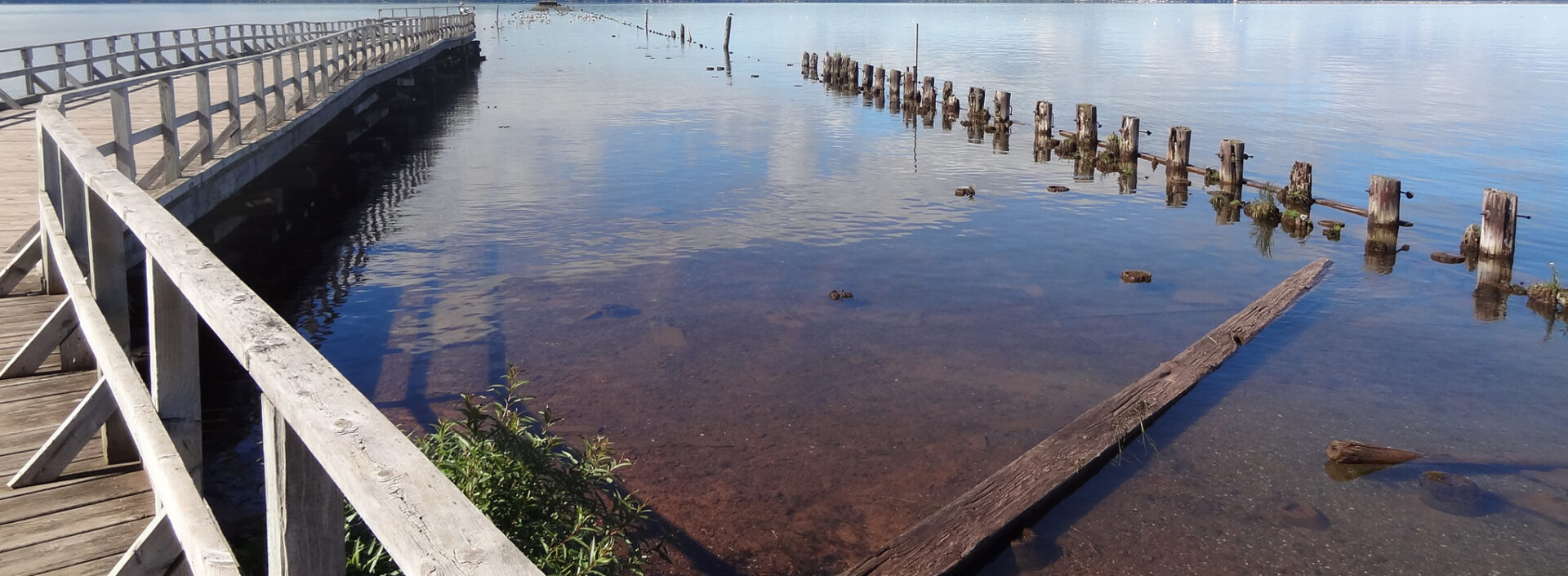Explanation for the predictions of water level changes that are based on models.
Hydrologic models used at NOAA-GLERL simulate the natural responses of the Great Lakes to runoff, precipitation, evaporation, inflows and outflows. The hydrologic models have been run with input from global circulation models (GCMs) for the atmosphere under assumed global warming conditions. The hydrologic modeling was done as recently as 2000 at the National Oceanic and Atmospheric Administration’s Great Lakes Environmental Research Laboratory (NOAA-GLERL) in Ann Arbor, Michigan. Results from improved models are expected in 2003.
About the Models
The CGCM1 model was run at the Canadian Centre for Climate Modeling and Analysis. The HadCM2 model was run at the Hadley Centre in Great Britain. The CGCM1 and HadCM2 models are the most recent GCMs used to estimate Great Lakes water level responses to global warming expected over this 21st century. The CGCM1 model lacks any representation of the Great Lakes. The HadCM2 model has a very crude spatial representation of the Great Lakes that allows for some feedback from the lakes to the atmosphere. Reasons for different results from CGCM1 and HadCM2 models are not known.
All of the recent model runs have used transient GCM models. Transient models incorporate full dynamical ocean models (with their thermal capacity) coupled to a model atmosphere with a gradual rise in greenhouse gases and gradual changes in atmospheric temperatures and precipitation. Transient models create a delay in warming, compared to results from earlier equilibrium models which showed results from a doubling of carbon dioxide in the atmosphere (for example). Results from a more recent HadCM3 model run have not yet been used to estimate Great Lakes water level responses. It is anticipated that this work will also be done at NOAA-GLERL.
How to use the model predictions of lake level change
Example: What do the models predict the water levels will be on Lakes Michigan and Huron in 2030?
Table 2 shows that water levels could be 0.2 feet higher, or 2.4 feet lower, than 1.6 feet above Low Water Datum (Chart Datum). The Base Case period was 1961 to 1990 and contained the lowest water levels of the century in the 1960s and the highest water levels of the century in the 1980s, according to the U.S. Army Corps of Engineers’ Monthly Bulletin of Lake Levels for the Great Lakes. The lower of the two levels predicted for 2030 would be: 1.6 – 2.4 = 0.8 feet below Low Water Datum (LWD).
According to the U.S. Army Corps of Engineers’ Monthly Bulletin of Lake Levels for the Great Lakes, the record low monthly mean lake level during the recreational boating season was 10 inches (0.8 feet) below LWD and it occurred in May, June and September of 1964. July and August levels were only an inch higher. That level is where one model predicts the 20-year average lake level will be in 2030.
Another way to use this information: think of the 1961 to 1990 range of lake levels repeating in 2020 to 2040, but at levels 2.4 feet lower. If this were to occur, a new record low boating season water level would be somewhere around 0.8 + 2.4 feet = 3.2 feet below LWD. For comparison, the level of lakes Michigan and Huron from mid-June through mid-December varied slightly from LWD to 0.1 feet (2 inches) above LWD. What would commercial shipping and recreational boating be like if water levels become three feet lower?



